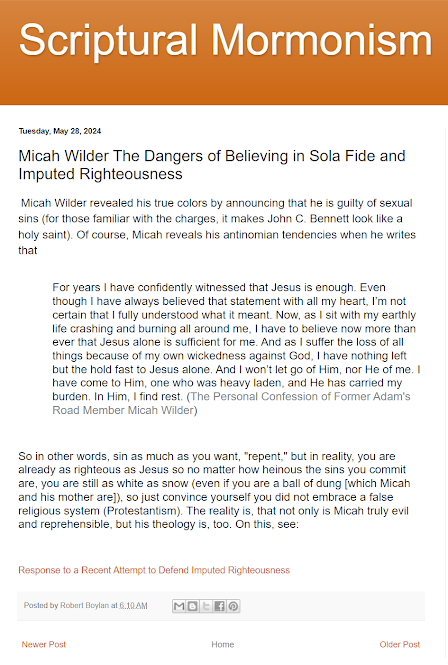Bad Cavalry Apologetics - Part 3: Book of Mormon Witnesses
More articles from this series:
Part 1
Part 2
Mormon antagonist and Cavalry Admin Travis Anderson presents arguments for the credibility of the Three and Eight Witnesses of the Book of Mormon. His analysis responds to Michael Licona and Gary Habermas's 'A Case for the Resurrection of Jesus,' which compares Mormon witnesses to Jesus's resurrection witnesses.
Though Anderson correctly identifies this as a false comparison, his commentary on Bart Ehrman's remarks about the Book of Mormon witnesses reveals an inconsistency. He selectively applies rigorous criticism to Licona and Habermas but not to Ehrman, reflecting a pattern in LDS apologetics where evidence standards shift based on their alignment with LDS truth claims.
This argument contains 3 key logical fallacies:
1. Non Sequitur: Maintaining testimony about a religious text after leaving its organization does not validate the original testimony. Persistence of belief does not establish truth.
2. Special Pleading: Anderson applies inconsistent credibility standards by:
- Omitting that seven of eleven witnesses were excommunicated
- Failing to address how excommunications affect his argument
- Dismissing testimony from excommunicated LDS critics (the Tanners, Dehlin, Runnels) while affirming other apostates testimony as legitimate
- If testimonies were false, witnesses would recant upon leaving
- Witnesses did not recant
- Therefore, testimonies must be true
Example of this in a formal expression:
- If P then Q (If false → would recant)
- Not Q (Did not recant)
- Therefore not P (Therefore not false/must be true)
NOTE: (As a general rule, I do not recommend or point people to CES Letter despite this infographic's reference to it, for additional reading on issues with the witnesses please see this article instead)
In conclusion, Anderson's selective emphasis on Cowdery and Harris rejoining the church, while omitting discussion of the majority who were excommunicated, demonstrates a concerning pattern of cherry-picking evidence to support what seem to be predetermined conclusions.

